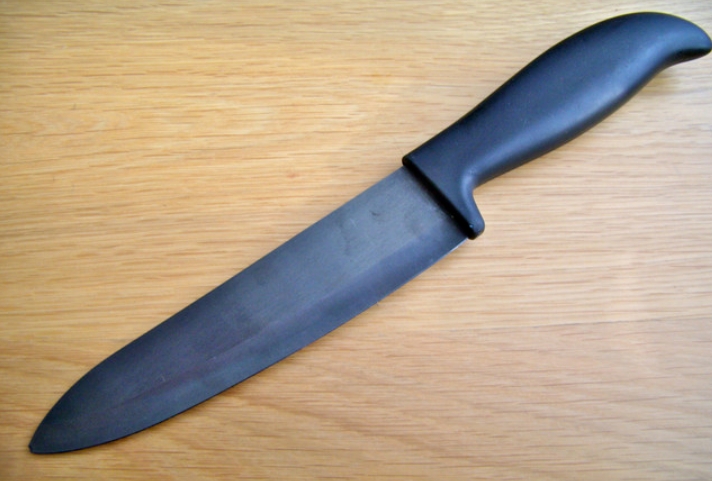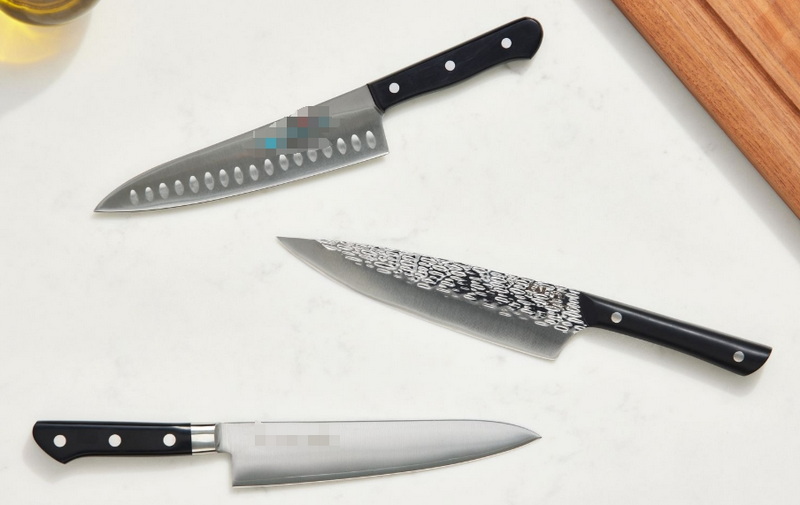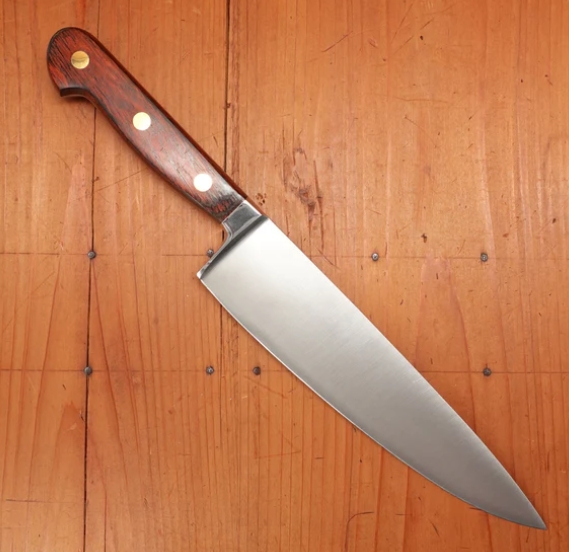

Views: 222 Author: Ella Publish Time: 2025-04-29 Origin: Site








Content Menu
● The Anatomy of a Kitchen Knife
● Most Common Mistakes with Kitchen Knives
>> Using the Wrong Knife for the Task
>> Incorrect Grip and Cutting Technique
>> Cutting on the Wrong Surface
>> Poor Cleaning and Storage Habits
>> Using Knives for the Wrong Purposes
>> Neglecting Knife Balance and Weight
>> Overlooking Knife Safety for Children
>> Ignoring Signs of Knife Damage
● FAQ: Top 5 Kitchen Knife Questions Answered
>> 1. What is the most versatile kitchen knife?
>> 2. How often should I sharpen my kitchen knives?
>> 3. Can I put my kitchen knives in the dishwasher?
>> 4. What is the correct way to store kitchen knives?
>> 5. Why is it dangerous to use a dull knife?
Kitchen knives are the backbone of every culinary adventure, whether you're preparing a simple salad or an elaborate gourmet feast. Yet, despite their indispensable role, many people unintentionally misuse their knives, leading to dull blades, unsafe environments, and disappointing results. This comprehensive guide explores the most common mistakes people make with kitchen knives, provides practical solutions, and offers visual aids to help you master the art of knife handling. By the end, you'll be equipped with the knowledge and confidence to use your knives safely and effectively for years to come.

A sharp, well-maintained kitchen knife is more than just a tool-it's an extension of the cook's hand, enabling precision, efficiency, and safety. However, even the most enthusiastic home cooks and seasoned chefs can fall into bad habits that compromise the performance and longevity of their knives. By understanding and addressing these common mistakes, you can transform your culinary experience, ensuring your knives remain sharp, safe, and ready for any challenge.
Before delving into the most common mistakes, it's essential to understand the basic parts of a kitchen knife. Each component plays a critical role in the knife's function and performance:
- Tip: The pointed end, ideal for delicate tasks and intricate cuts.
- Edge: The sharpened portion used for cutting.
- Spine: The unsharpened, thick top of the blade, providing strength.
- Heel: The rear part of the edge, perfect for powerful, heavy-duty cuts.
- Bolster: The thick junction between the blade and handle, offering balance and protection for your fingers.
- Tang: The blade extension that runs into the handle, contributing to overall balance and durability.
- Handle: The grip area, crafted from various materials for comfort and control.
Understanding these parts helps you appreciate how to use, maintain, and choose the right knife for each task.
One of the most frequent errors in the kitchen is selecting the wrong knife for a specific job. Each knife is engineered for particular tasks: a chef's knife excels at chopping and dicing, a paring knife is perfect for peeling and intricate work, and a serrated knife is designed to slice through bread and tomatoes effortlessly. Using a paring knife to chop a butternut squash or a chef's knife to slice bread not only makes the task more difficult but can also damage the knife and increase the risk of accidents.
How to Avoid: Familiarize yourself with the different types of kitchen knives and their intended uses. Invest in a basic set that covers most needs: a chef's knife, paring knife, serrated bread knife, utility knife, and possibly a boning or fillet knife for specialized tasks.
A dull knife is a dangerous knife. Many people neglect regular maintenance, allowing their blades to become blunt and ineffective. Regular honing realigns the edge, while sharpening restores sharpness. Failing to maintain your knives not only makes cutting more difficult but also increases the likelihood of slips and injuries.
How to Avoid: Hone your knives before or after each use and sharpen them every few months, depending on frequency of use. If you're unsure how to sharpen a knife, seek professional help or use a reliable sharpening system.
Holding a knife incorrectly reduces control and increases the risk of slipping. Many people grip the handle too far back or place a finger along the spine, which can cause fatigue and accidents. The optimal grip is the “pinch grip,” where you hold the blade just in front of the handle with your thumb and forefinger, wrapping your remaining fingers around the handle. Your other hand should use a “claw grip” to hold the food, tucking your fingertips inward to protect them from the blade.
How to Avoid: Practice the pinch grip and claw grip until they become second nature. Watch instructional videos or attend a knife skills class to refine your technique.
Cutting on hard surfaces like glass, granite, or metal quickly dulls the blade and damages the edge. Even using a plate as a cutting surface can ruin a good knife. The best surfaces are wooden or high-quality plastic cutting boards, which provide enough give to protect your knife while remaining sturdy and safe.
How to Avoid: Invest in a good wooden or plastic cutting board. Avoid cutting directly on countertops, plates, or any hard surface.
Dishwashers are the enemy of kitchen knives. The combination of high heat, harsh detergents, and jostling can dull blades, cause rust, and damage handles. Many people also store knives loosely in drawers, where they can become chipped, bent, or cause accidental cuts when reaching in.
How to Avoid: Always wash knives by hand with warm, soapy water and dry them immediately. Store knives in a dedicated knife block, on a magnetic strip, or with blade guards to protect the edge and prevent accidents.
Careless handling-such as leaving knives near the edge of a counter, passing them blade-first, or not paying attention while cutting-can lead to serious injuries. Distractions, cluttered workspaces, and rushing through tasks all increase the risk of accidents.
How to Avoid: Always handle knives with care and respect. Keep your workspace tidy, focus on your task, and never leave knives unattended or within reach of children.

Kitchen knives are designed for cutting food, not for prying open cans, opening packages, or cutting through bones (unless using a cleaver). Misusing your knife can damage the blade, break the tip, or cause injury.
How to Avoid: Use the right tool for each job. Keep a pair of kitchen shears, a can opener, and a cleaver on hand for tasks that require them.
Many people choose knives based solely on appearance or price, ignoring the importance of balance and weight. A knife that's too heavy or unbalanced can cause fatigue and make precise cuts difficult.
How to Avoid: When purchasing a knife, hold it in your hand and assess its balance and weight. The knife should feel comfortable and well-balanced, with the weight evenly distributed between the blade and handle.
Children are naturally curious, and kitchens are full of fascinating tools. However, failing to teach children about knife safety or leaving knives within their reach can lead to accidents.
How to Avoid: Educate children about knife safety from an early age. Store knives out of reach and supervise young cooks closely. Consider using special kid-safe knives for teaching basic skills.
Chipped edges, bent tips, loose handles, or rust spots are all signs that a knife needs attention. Ignoring these issues can make the knife unsafe and less effective.
How to Avoid: Regularly inspect your knives for damage. Address minor issues promptly-sharpen dull blades, tighten loose handles, and remove rust. Replace knives that are beyond repair.
- Choose the right knife for each task. Familiarize yourself with the different types of kitchen knives and their uses.
- Keep knives sharp and regularly honed. Make honing and sharpening part of your kitchen routine.
- Use proper grip and cutting techniques. Practice the pinch and claw grips for maximum control and safety.
- Cut only on wood or plastic boards. Protect your knives and your countertops by using the right cutting surface.
- Wash knives by hand and dry immediately. Avoid the dishwasher and store knives safely.
- Handle knives with respect and attention. Stay focused and keep your workspace organized.
- Never use knives for prying, twisting, or cutting non-food items. Use the right tool for the job.
- Choose knives that feel balanced and comfortable in your hand. Test knives before purchasing whenever possible.
- Teach children about knife safety. Supervise their use and store knives securely.
- Inspect knives regularly for damage. Address issues promptly and replace damaged knives as needed.
Mastering kitchen knife skills is about more than just slicing and dicing-it's about safety, efficiency, and respect for your tools. By avoiding the common mistakes outlined above, you'll not only prolong the life of your knives but also make your time in the kitchen safer and more enjoyable. Remember: the right knife, kept sharp and used correctly, is your best ally in the kitchen.

A chef's knife is generally considered the most versatile. Its size and balance make it suitable for chopping, slicing, dicing, and mincing a wide variety of foods. However, it's not ideal for specialized tasks like deboning or cutting bread, where a boning knife or serrated knife would be more appropriate.
You should hone your knives before or after every use to keep the edge aligned. Full sharpening is needed every few months, depending on usage. If you notice your knife is dull or not cutting efficiently, it's time to sharpen it.
No, you should never put kitchen knives in the dishwasher. The heat, detergents, and movement can dull the blade, cause rust, and damage the handle. Always wash knives by hand and dry them immediately.
Store knives in a way that protects the blade and prevents accidents. The best options are a knife block, magnetic strip, or blade guards. Avoid tossing knives loose in a drawer, as this can lead to nicks, chips, and injuries.
A dull knife requires more force to cut, increasing the likelihood of slipping and causing injury. Sharp knives are safer because they cut cleanly and with less effort, giving you better control over your cuts.